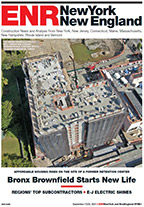• Look at all possible incentives and economic development programs at the federal, state and local levels.
• Consider Special Districts, such as Transportation Districts and Community Improvement Districts, which can give rise to funds that reimburse the developer for certain site costs.
• Quantify incentives on their own and in conjunction with other offerings.
• Encourage incentive funders to compete against each other.
• Determine tax issues related to accepting incentives and develop strategies to address them.
• Determine the best package for reducing costs and making the project viable.
It’s All About Jobs
There has been a shift away from incentives that are “sold” to the public simply as revenue generators. Governments are more motivated than ever to boost revenue, but in times like these, the public wants to hear how incentives will strengthen the local jobs picture. Employment is not just the end goal. Construction jobs make it a multi-stage process that injects cash into the local economy and creates revenue through sales and income taxes.
The reality of today’s marketplace is that, without incentives, many developments do not make financial sense. The developer asking for incentives is often viewed as wanting something for nothing, which in many, if not most instances, is not the case. Incentives simply allow the developer to manage and share—but certainly not eliminate—their risk.
If the developer doesn’t find what is needed from one jurisdiction, there are usually others willing to offer options elsewhere. As in the economy at large, competition is generally healthy and results in the most favorable cost structure.
In the current political climate, there are always questions about whether government development incentives and grants are a good investment of taxpayer dollars. The fact is that incentives continue to encourage investment in low income communities.
The NMTC is a good example: 594 awards have allocated $29.5 billion in tax credits since the program was established in 2000.
Today, if an economic incentive package can be shown to expand jobs, it’s going to enjoy greater public and political support, at least in the immediate future.
Developers must weigh all of these options to determine what combination of government subsidy, investment and financing will make their project viable.
Brian K. Humes, CPA, is a tax partner with CliftonLarsonAllen in Saint Louis, Mo. He has more than 20 years of experience in commercial real estate transactions and development. He has worked on more than 75 tax incremental financing projects and has extensive experience in New Market Tax Credits, TDDs, CIDs and real estate tax abatements. He can be reached at Brian.Humes@cliftoncpa.com.



